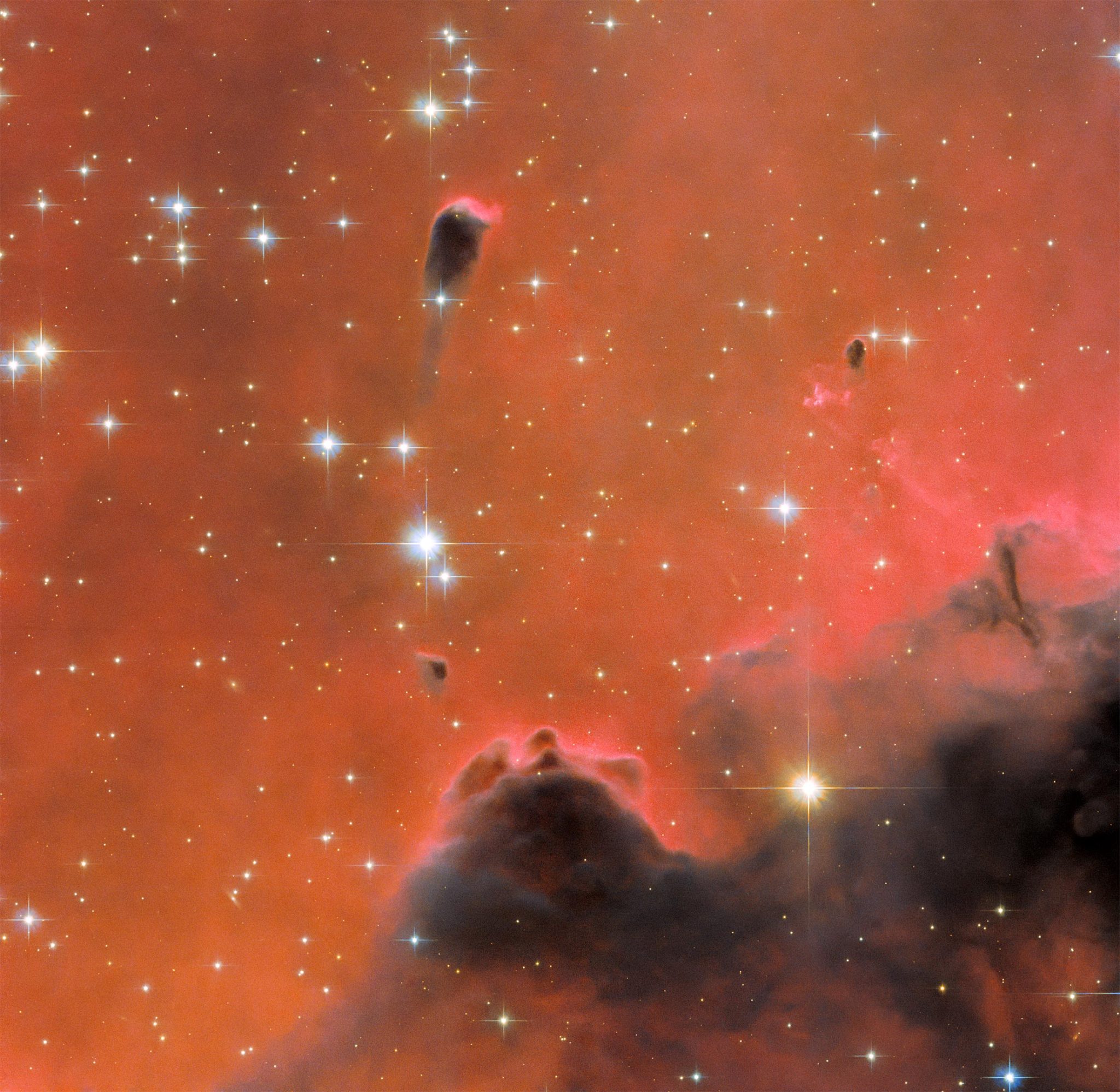
Just in time for Christmas, this new Picture of the Week from the Hubble Space Telescope features a glistening scene in holiday red. This festive image shows a small region of the well-known nebula Westerhout 5, which is located approximately 7,000 light-years from Earth. Suffused with bright red light, this luminous image hosts a variety of interesting features, including a free-floating Evaporating Gaseous Globule (frEGG). The frEGG in this image is the small tadpole-shaped dark region in the upper center-left.
FrEGGs are a particular class of Evaporating Gaseous Globules (EGGs). Both frEGGs and EGGs are regions of gas that are sufficiently dense that they photoevaporate less easily than the less compact gas surrounding them. Photoevaporation occurs when gas is ionized and dispersed away by an intense source of radiation — typically young, hot stars releasing vast amounts of ultraviolet light. EGGs were only identified fairly recently, most notably at the tips of the Pillars of Creation (see image below), which were captured by Hubble in iconic images released in 1995.
FrEGGs were classified even more recently, and are distinguished from EGGs by being detached and having a distinct ‘head-tail’ shape. FrEGGs and EGGs are of particular interest because their density makes it more difficult for intense UV radiation, found in regions rich in young stars, to penetrate them. Their relative opacity means that the gas within them is protected from ionization and photoevaporation. This is thought to be important for the formation of protostars, and it is predicted that many FrEGGs and EGGs will play host to the birth of new stars.

The frEGG in this image (at the top of the page) is a dark spot in the sea of red light. The red color is caused by a particular type of light emission known as H-alpha emission. This happens when an extremely energetic electron within a hydrogen atom loses a specific amount of energy, leading to the electron becoming less energetic and releasing this recognizable red light.
SciTech Daily
Nothing controversial here, just an opportunity to “look up” and appreciate the vast grandeur and beauty of the heavens. Note that the “Pillars of Creation” shown in the Hubble image are about 5000 times larger than the diameter of our solar system.